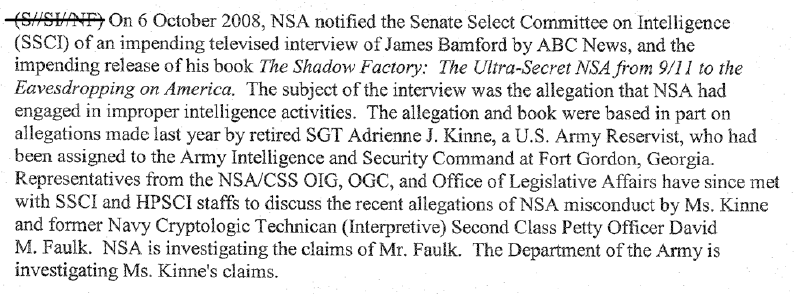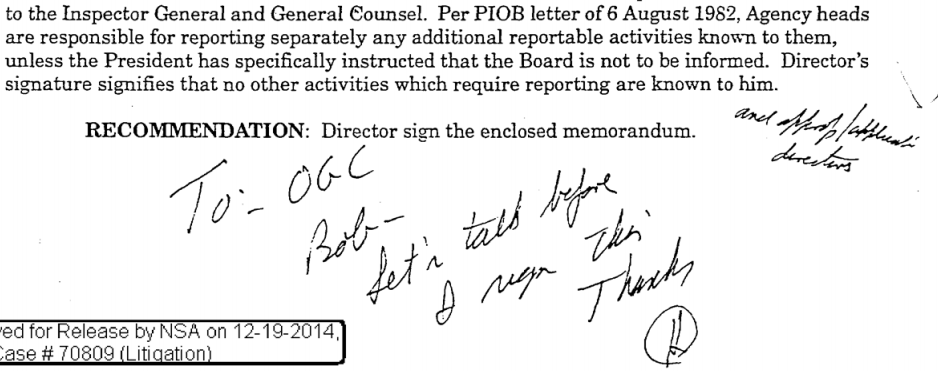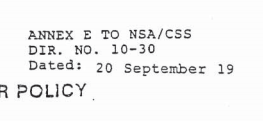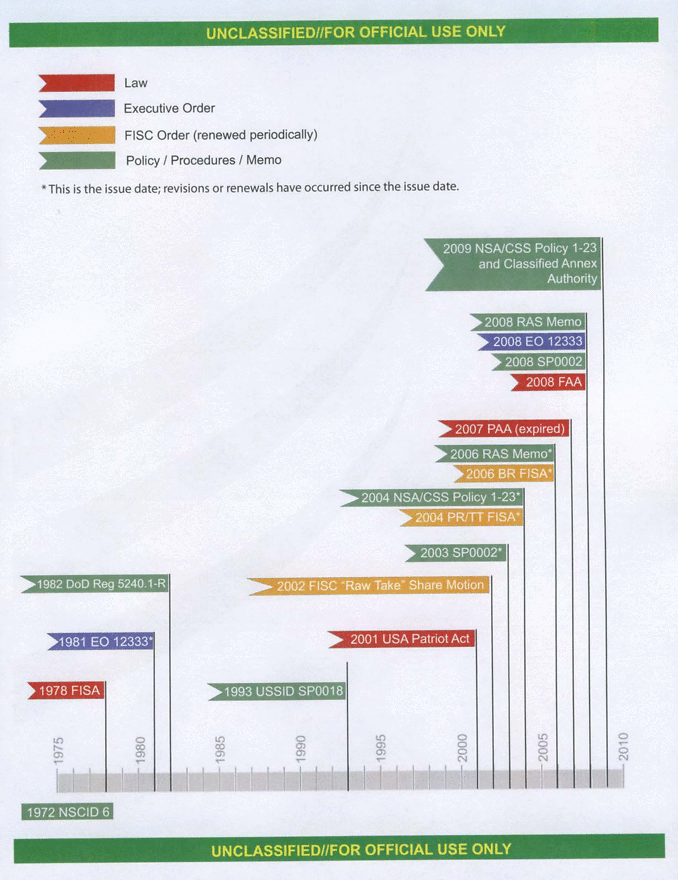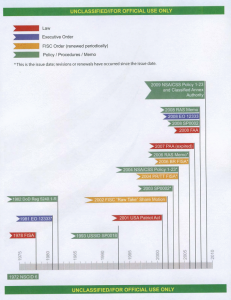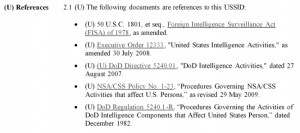I Con the Record just released some ridiculously overclassified Internet dragnet documents it claims shows oversight but which actually shows how they evaded oversight. I’ve added letters to ID each document (I’ll do a post rearranging them into a timeline tomorrow or soon thereafter).
For a timeline I did earlier of the Internet dragnet program see this post.
This will be the first of several working threads, starting with descriptions of what we’ve got.
8/12: Note I will be updating this as I can clarify dates and content.
So-called Judicial oversight
A. FISC Opinion and Order: This is the Kollar-Kotelly order that initially approved the dragnet on July 14, 2004. A searchable version is here.
B. FISC Primary Order: This is an Internet dragnet order signed by Reggie Walton, probably in 2008 or very early 2009. It shows that the Internet dragnet program, which was almost certainly illegal in any case, had less oversight than the phone dragnet program (though at this point also collected fewer records). It was turned over pursuant to FAA requirements on March 13, 2009.
C. FISC Primary Order: This is an Internet dragnet order probably from May 29, 2009 (as identified in document D), signed by Reggie Walton. It shows the beginning of his efforts to work through the Internet violations. It appears to have been provided to Congress on August 31, 2009.
D. FISC Order and Supplemental Order: This is a version of the joint June 22, 2009 order released on several occasions before. It shows Reggie Walton’s efforts to work through the Internet dragnet violations. Here’s one version.
E. FISC Supplemental Order: This appears to be the dragnet order shutting down dragnet production. It would date to fall 2009 (production was likely shut down in October 2009, though this might reflect the initial shut-down).
F. FISC Primary Order: I’m fairly sure this is an order from after Bates turned the Internet dragnet back on in 2010 (and is signed by him), though I will need to verify that. It does require reports on how the NSA will segregate previously violative records, which is consistent with it dating to 2011 sometime (as is the requirement that the data be XML tagged).
G. FISC Memorandum Opinion Granting in Part and Denying in Part Application to Reinitiate, in Expanded Form, Pen Register/Trap and Trace Authorization: This is the order, from sometime between July and October 2010, where John Bates turned back on and expanded the Internet dragnet. Here’s the earlier released version (though I think it is identical).
H. Declaration of NSA Chief, Special FISA Oversight and Processing, Oversight and Compliance, Signals Intelligence Directorate, the National Security Agency: This was a report Walton required in document C, above, and so would be in the May-June 2009 timeframe. Update: Likely date June 18, 2009.
I. Government’s Response to the FISC’s Supplemental Order: This is the government’s response to an order from Walton, probably in his May 29, 2009 opinion (see this order for background), or even earlier in May.Update: This response dates to June 18, 2009 or slightly before.
J. Declaration of NSA Chief, Special FISA Oversight and Processing, Oversight and Compliance, Signals Intelligence Directorate, the National Security Agency: This appears to be the declaration submitted in support of Response I and cited in several places. Update: likely date June 18, 2009.
K. Supplemental Declaration of Chief, Special FISA Oversight and Processing, Oversight and Compliance, Signals Intelligence Directorate, the National Security Agency: This appears to be the declaration that led to document C above.
L. Government’s Response to the FISC’s Supplemental Order Requesting a Corrective Declaration: This is a declaration admitting dissemination outside the rules responding to 5/29 order.
M. Government’s Response to a FISC Order: This is the government’s notice that it was using automatic queries on Internet metadata, just as it also was with the phone dragnet. This notice was provided to Congress in March 2009.
N. Declaration of Lieutenant General Keith B. Alexander, U.S. Army, Director, NSA, Concerning NSA’s Compliance with a FISC Order: After Walton demanded declarations in response to the initial phone dragnet violation, he ordered NSA to tell him whether the Internet dragnet also had the same problems. This is Keith Alexander’s declaration describing the auto scan for that program too. It was provided to Congress in March 2009.
O. Preliminary Notice of Potential Compliance Incident: This is the first notice of the categorical violations that ultimately led to the temporary shutdown of the dragnet, in advance of order E.
P. Notice of Filing: This is notice of a filing in response to inquiry from Judge Walton. It could be from any time during David Kris’ 2009 to early 2011 tenure.
Q: Government’s Application for Use of Pen Register/Trap and Trace Devices for Foreign Intelligence Purposes: This appears to be the application following Order E, above. I don’t think it’s the 2010 application that led to the reauthorization of the dragnet, because it refers to facilities whereas the 2010 order authorized even broader collection. (Remember Bates’ 2010 order said the government applied, but then withdrew, an application.) Update and correction: this application must post-date December 2009, because that’s when NSA changed retention dates from 4.5 years to 5. Also note reference to change in program and request to access illegally collected data from before 10/09.
R. Memorandum of Law and Fact in Support of Application for Pen Registers and Trap and Trace Devices for Foreign Intelligence Purposes: This appears to be the memorandum of law accompanying application Q.
S. Declaration of General Keith B. Alexander, U.S. Army, Director, NSA, in Support of Pen Register/Trap and Trace Application: This is Alexander’s declaration accompanying Q.
T. Exhibit D in Support of Pen Register/Trap and Trace Application: This is a cover letter. I’m not sure whether it references prior communications or new ones.
U. First Letter in Response to FISC Questions Concerning NSA bulk Metadata Collection Using Pen Register/Trap and Trace Devices: This is the first of several letters in support of reinitiation of the program. The tone has changed dramatically here. For that reason, and because so much of it is redacted, I think this was part of the lead-up to the 2010 reauthorization.
V. Second Letter in Response to FISC Questions concerning NSA bulk Metadata Collection Using Pen Register/Trap and Trace Devices: This second letter is entirely redacted except for the sucking up to Bates stuff.
W. Third Letter in Response to FISC Questions Concerning NSA Bulk Metadata Collection Using Pen Register/Trap and Trace Devices: More sucking up. Some language about trying to keep access to the existing illegally collected data.
X. Application for Pen Register/Trap and Trace Devices for Foreign Intelligence Purposes: This is the first application for the Internet dragnet, from 2004. Very interesting. Note it wasn’t turned over until July 2009, after Congress was already learning of the new problems with it.
Y. Memorandum of Law and Fact in Support of Application for Pen Registers and Trap and Trace Devices for Foreign Intelligence Purposes: The memorandum of law accompanying X. Also turned over to Congress in 2009.
Z. Declaration of General Michael V. Hayden, U.S Air Force, Director, NSA, in Support of Pen Register/Trap and Trace Application: This goes with the initial application. NSA has left stuff unredacted that suggests they were access less bandwith than they, in the end, were. Also remember NSA violated this from the very beginning.
AA. Application for Use of Pen Register/Trap and Trace Devices for Foreign Intelligence Purposes: This appears to be the application for the second PRTT order. I’ll return to this tomorrow, but I don’t think it reflects the violation notice it should.
BB. Declaration of NSA Chief, Special FISA Oversight and Processing, Oversight and Compliance, Signals Intelligence Directorate: This is NSA’s declaration in conjunction with the first reapplication for the dragnet. This should have declared violations. It was turned over to Congress in March 2009. [update: these appear to be early 2009 application]
CC. Declaration Lieutenant General Keith B. Alexander, U.S. Army, Director, NSA, Concerning NSA’s Implementation of Authority to Collect Certain Metadata: This is Alexander’s declaration accompanying the End-to-End report, from sometime in fall 2009.
DD: NSA’s Pen Register Trap and Trace FISA Review Report: The end-to-end report itself. it was provided to Congress in January 2010.
EE: DOJ Report to the FISC NSA’s Program to Collect Metadata: DOJ’s accompaniment to the end-to-end report.
FF: Government’s First Letter to Judge Bates to Confirm Understanding of Issues Relating to the FISC’s Authorization to Collect Metadata: After Bates raauthorized the Internet dragnet, DOJ realized they might not be on the same page as him. Not sure if this was in the 2009 attempt or the 2010 reauthorization.
GG: Government’s Second Letter to Judge Bates to Confirm Understanding of Issues Relating to the FISC’s Authorization to Collect Metadata: A follow-up to FF.
HH: Tab 1 Declaration of NSA Chief, Special Oversight and Processing, Oversight and Compliance, Signals Intelligence: This appears to be the 90-day report referenced in document C. Update: Actually it is referenced in Document A: note the paragraphs describing the chaining that were discontinued before the dragnet approval.
II: Verified Memorandum of Law in Response to FISC Supplemental Order: This is one of the most fascinating documents of all. It’s a 2009-2011 (I think August 17, 2009, though the date stamp is unclear) document pertaining to 3 PRTT targets, relying on criminal PRTT law and a 2006 memo that might be NSA’s RAS memo (though the order itself is FBI, which makes me wonder whether it seeds the FBI program). It may have been what they used to claim that Internet content counted as metadata.
JJ: Memorandum of Law in Response to FISC Order: A September 25, 2006 response to questions from the FISC, apparently regarding whether rules from criminal pen registers apply to PATRIOT PRTT. While I think this addresses the application to Internet, I also think this language may be being used for location.
So-called Congressional oversight
KK: Government’s Motion to Unseal FISC Documents in Order to Brief Congressional Intelligence and Judiciary Committees: This is a request to unseal an order — I suspect document E — so it could be briefed to Congress.
LL: Order Granting the Government’s Motion to Unseal FISC Documents in Order to Brief Congressional Intelligence and Judiciary Committees: Walton’s order to unseal KK for briefing purposes.
MM: April 27, 2005 Testimony of the Attorney General and Director, FBI Before the Senate Select Committee on Intelligence: This is the 2005 testimony in which — I pointed out before — Alberto Gonzales did not brief Congress about the Internet dragnet.
So-called Internal oversight
NN: NSA IG Memo Announcing its Audit of NSA’s Controls to Comply with the FISA Court’s Order Regarding Pen Register/Trap and Trace Devices: This lays out an audit with PRTT compliance, noting that the audit also pertains to BR FISA (phone dragnet). It admits the audit was shut down when the order was not renewed. It’s unclear whether this was the 2009 or the 2011 shutdown, but the implication is it got shut down because it would not pass audit.
OO: NSA IG Memo Suspending its Audit of NSA after the NSA’s PRTT Metadata Program Expired: the formal announcement they were shutting down the IG report. Again, it’s not clear whether this was the 2009 or the 2011 shutdown.
If you find this work valuable, please consider donating to support the work.

